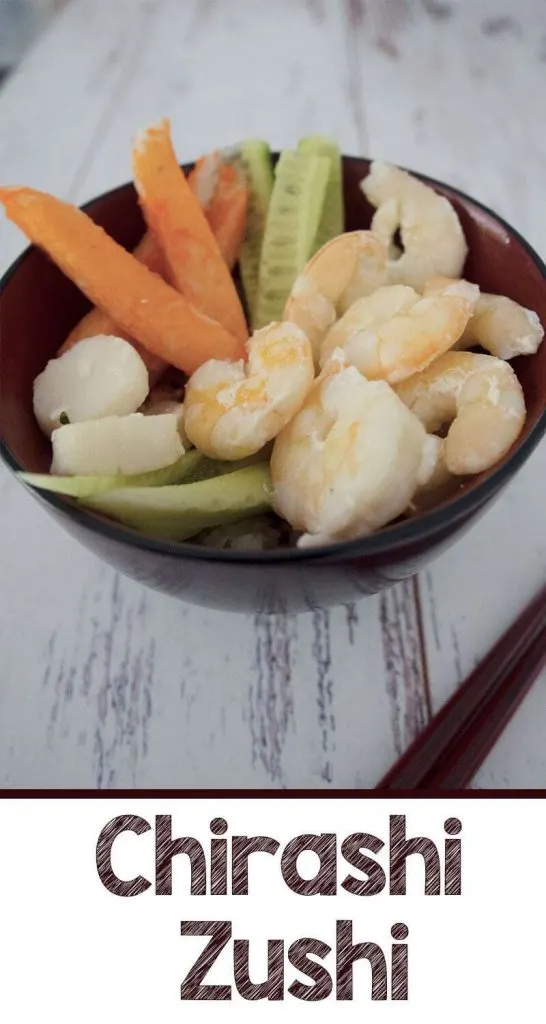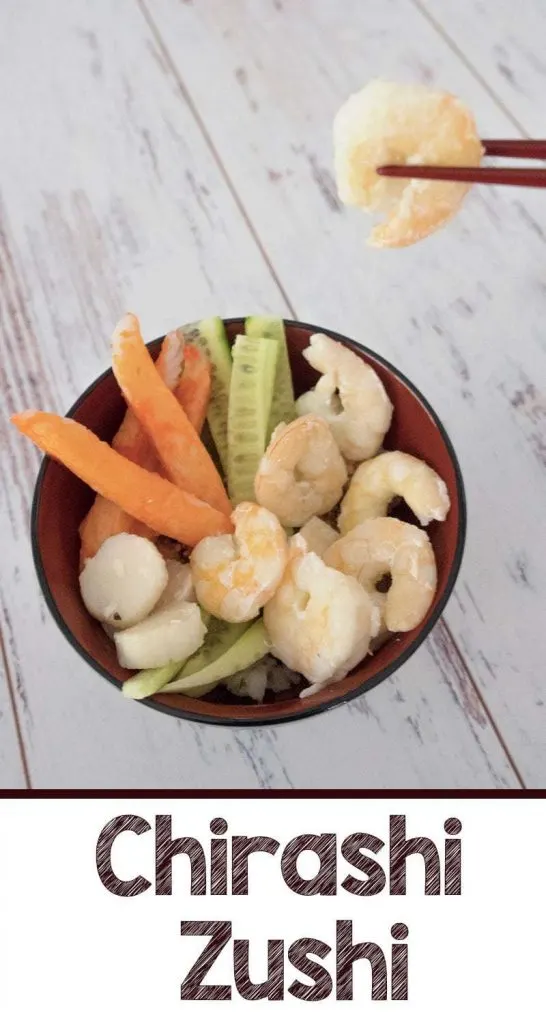On our travels in Japan, we’ve enjoyed chirashi zushi from Osaka all the way up to Sapporo. It’s a delicious bed of perfectly seasoned sushi rice topped with anything from a layer to a mound of fresh seafood, vegetables and other condiments.

We’ve had a similar-looking dish called kaisen-don but that uses steamed rice as the base rather than sushi rice. It’s a tasty meal, filling but not heavy and I’ve enjoyed it without exception.
It’s not particularly common on a restaurant menu but I love the idea of chirashi zushi or scattered sushi that’s often made by Japanese mums at home because it incorporates all of the flavour, texture and visual appeal of sushi without requiring the precision and skills of a sushi master.
It was a concept I immediately knew I’d take home and adapt to fit into our own diet and the local produce available in Australia. The great thing about studying a food concept when you travel is that you have to eat plenty of it prepared in different places to observe all the nuances.
So here is my version of chirashi zushi. We have a local fish shop which always has a lovely selection of fish and seafood so when I’m feeling a bit indecisive I’ll order a bit of everything and serve up scatter sushi for tea. Equally you can use it as a way to use up the odds and ends in the fridge. It’s a surprisingly filling and quite healthy way to get a variety of seafood into your diet.
Table of Contents
Ingredients for chirashi zushi
Sushi rice
Make your sushi rice in your usual way. I use a rice cooker and while I know that not everyone gets on with them I find it cooks rice perfectly every time. Remove the rice to a shallow bowl immediately after it’s cooked and add your seasoning.
This can either be a combination of rice vinegar, caster sugar and salt or you can get sushi seasoning in a bottle from your Asian grocer. I got mine and most of the store cupboard ingredients for this dish from the Osaka kit by Naked Sushi Kits.
Additional rice seasonings
Once I’m plating the dish into the bowl I top the rice with some extra flavours including finely chopped ao nori, sesame seeds, shichimi togarashi which is a mildly spicy pepper you often find on the tables of restaurants in Japan. You could also use furikake as a single step in place of these ingredients to add a different flavour.
Whether it’s in the furikake or from the ao nori I like to include some form of nori as although it’s not an essential part of sushi it gives a bit of a nod to that toasted seaweed flavour which is so delicious.
The toppings
Then it’s time to get creative with what you have available and what flavours and combinations you most enjoy. There really are no rules so include what you like, what you have leftover and leave out anything that doesn’t appeal.
Seafood
I’m fortunate to have a great fish market only a few kilometres down the road and they are very obliging with small quantities for sushi. Often I’ll save a little if we’re having tuna or salmon for sushi the next day, I don’t have great knife skills but I can usually manage to get a thin slice on firmer fish.
I’ve also found that the cryovac process for sealing food keeps prawns and scallops in excellent condition in the freezer if I have spare. The great thing with chirashi zushi is that you can use raw or cooked seafood, whichever you like the best, a combination can work well too.
Another option if I want to make sushi and don’t have a selection on hand is to pick up a container of sashimi from the Japanese restaurant up the road and use that. It’s a great time saver for a healthy home cooked meal.
Vegetables
For crunchy contrast and to refresh the palate adding some vegetables can be good and adds variety to the plate. Things like cucumber, snow peas and carrot can be julienned very thinly and look attractive on the plate.
Kinshi Tamago
This is a very thin egg crepe that is cut into fine ribbons and used on many dishes. It is a common ingredient in chirashi sushi and can help to lift and hold other ingredients in place. I don’t always use it if I have plenty of other flavours and textures available but perfecting a good kinshi tamago is a useful skill.
Final Touches
Ikura or Tobiko
Ikura is salmon roe and in Australia is mostly available from your fishmonger. Tobiko is flying fish roe which is much smaller and depending on your Asian grocer’s mood on the day they ordered they can come in a variety of colours. I ended up with sakura (lolly pink) last time I went rather than the red/coral colour I prefer but they sometimes have black or even lime green. I like the salty burst but it’s not essential.
I love ikura best of course but it’s super expensive here and doesn’t last very long in the fridge so it’s a special treat only. In Japan ikura is often heaped on the sushi even in some of the cheaper sushi trains.
This confused me for a long time but they’ve perfected a way to create artificial ikura using a technique called spherification which creates an edible bead that looks exactly like the genuine roe. Not only can I not tell the difference by looking at it but the salty burst and texture is very close too so I would happily buy that for my week-night sushi if it was available.
Shredded nori
You can buy shredded nori at your Asian grocer or finely cut a sheet of nori at home. If I’ve used a generous seasoning of ao nori on the rice I might skip this step but it does add good colour and texture.
Assembling your chirashi zushi
- Take a bowl and add a serving of your cool seasoned sushi rice. Gently break up the rice if it has stuck together a little as it cooled.
- Add the additional seasonings you have choosen to the rice. A pinch of ao nori, a scattering or sesame seeds and shichi-mi togarashi to your taste. I leave the seasons sitting on the rice as I layer additional ingredients but if you prefer you can use a gentle cutting motion with your rice paddle to mix them into the rice without breaking it. You don’t want to mash the rice grains.
- Now layer your ingredients on top; fish, seafood, vegetables and kinshi tamago. Arrange everything to be pleasing to the eye, you can group colours and textures or mix them up.
- If you want you can top with ikura or tobiko, finely shredded nori is also a tasty and attractive.
Chirashi zushi is one of my go-to quick dinners for busy weeknights but it can also be a beautifully presented meal to serve with guests.
You can pin these images in Pinterest for easy reference later.

